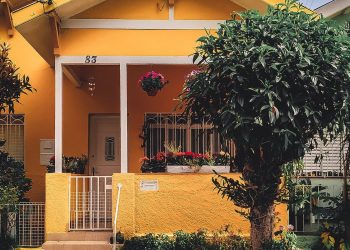Some of the links in this post may be affiliate links. This means if you click on the link and purchase the item, I will receive an affiliate commission at no extra cost to you…you”re just helping re-supply our family’s travel fund.
According to the EPA, indoor air pollutants are two to five times higher than the outdoors. Considering that 90% of Americans spend the majority of their time indoors, many people may be breathing contaminated air and not realizing it. The discussion below focuses on drawing your attention to what these are and natural ways to counteract them. The goal of these environmentally friendly solutions is to improve your health and complement your home’s ventilation. Here’s how to improve indoor air quality.
- Opt for indoor plants effective at filtering pollutants
Many households in the country believe bringing indoor plants to their dwelling places adds to the aesthetics. However, there is more to indoor plants than beautifying the home. Naturally, oxygen is the by-product of plant respiration. But they also require carbon dioxide for this exchange of air. Therefore, by bringing them indoors, you can be sure that these plants will use the carbon dioxide in your enclosed space. This intricate process purifies your indoor air and improves its quality.
Some indoor plants do a better job cleaning the air than others. This is because some indoor air is polluted with ammonia, xylene, benzene, and formaldehyde. They can be very difficult to eliminate, and some plants are not built for that intense process. So consider the Snake plant, the Peace Lily, Philodendron, and the Boston Fern. According to Dr. B.C. Wolverton, who led the study, these plants have proven to be effective at filtering the air of contaminants.
- Consider an environmentally friendly alternative to the air condition
Your air conditioning system can be a lifesaver in those hot summer months. However, it takes a lot of energy to cool your home. The increased energy demands lead to higher CO2 emissions. Additionally, most people do not realize it when the AC refrigerant starts to leak. When this happens, it releases dangerous gases into your indoor air.
A reliable alternative that goes easy on the environment are evaporative coolers. They are considered safer because they utilize water and not refrigerant. Moreover, their water-soaked pad components help filter indoor air, making them excellent for the environment.
- Fix leaky taps
You’re not alone if you’ve wondered how leaky taps contaminate your indoor air. A 2018 study posed this question to respondents, and many struggled to find the connection. Leaky taps increase the risk of molds and dampness. Molds are fungi, and they grow in multicellular strands. They can detach and float in indoor spaces as spores. And because these particles are so tiny, they are invisible to the naked eye. The more spores indoors, the higher the chances of breathing them into your respiratory system.
This can trigger respiratory issues in house occupants. It can also exacerbate pre existing allergies that people in the household may have. This makes a leaky tap more than a minor household plumbing issue. Fixing a leaky tap is environmentally friendly because you will save 200,000 liters of water in a year. By fixing it, you would have saved an environmental problem and improved indoor air quality.
Like this:
Loading…
Other Blog Posts You Might Enjoy
Source by www.idyllicpursuit.com











